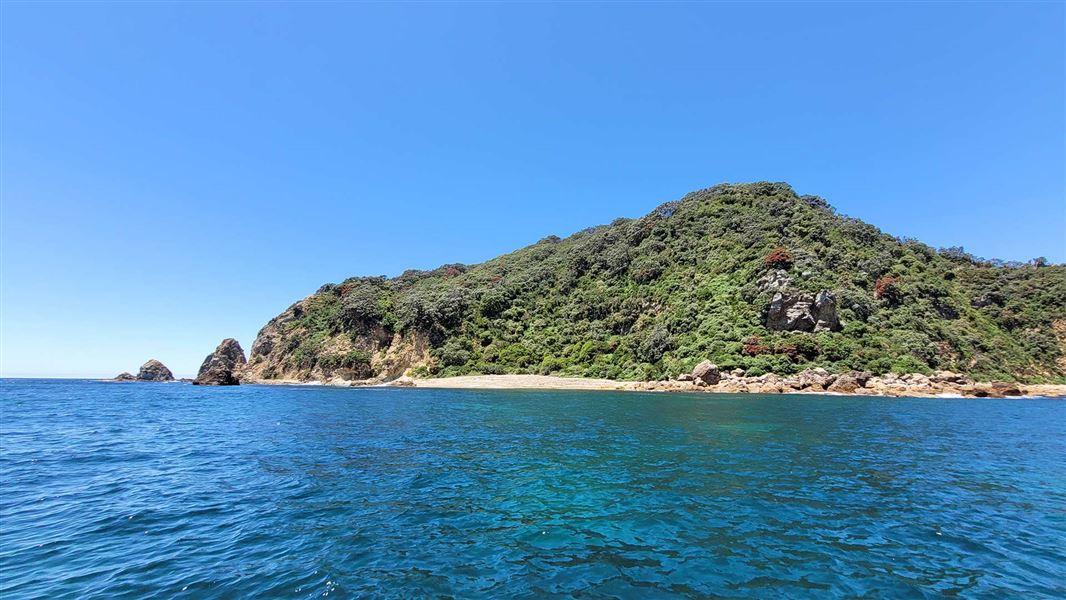Cuvier Island (Repanga Island)
Cuvier Island and its 13 associated rock stacks, has been a predator free island since 1993. It is a nature reserve with a significant number of endangered species such as tīeke/North Island saddleback. Their birdsong can be heard from the waters surrounding the island.
Situated east of the northern tip of the Coromandel, Cuvier is a volcanic island, nature reserve, and covered with coastal pōhutukawa. Its broadleaf forest is home to New Zealand's endangered wildlife. Cuvier is managed primarily for scientific and species protection purposes. Access is restricted to those with DOC permits and biosecurity clearance from the local DOC office. There is no public access.
Recent work includes surveys for the invasive moth plant and to determine the success of previous spraying. Seven juvenile tuatara bred at Auckland Zoo have been released onto the island.
Tracks have been maintained and there are regular checks of the bait stations and bird surveys are undertaken. Recent rodent monitoring confirmed no rodents have made their way to the island. There have been three annual releases of one hundred Pycrofts Petrel chicks. These have been introduced to artificial burrows, and are a monitor for the translocation of Chatham Islands petrel to other islands in the Chatham group.
Cuvier Island Light Station is one of the most complete historic light stations in New Zealand. Lit in 1889, the Cuvier lighthouse was the first cast iron light tower manufactured in New Zealand. This represented a significant advancement for New Zealand industry. Automated in 1982 and now run by solar power, the lighthouse continues to operate and is one of the most visually spectacular in the country, set ag ainst a background of stunning seascapes.
DOC maintains all the historic sites on the island including a WW2 radar station, and the structures associated with the light station.
In the bush on the higher parts of the island there are several Māori sites including a pā, garden terraces and pits.
Mercury Islands
Situated north-east of Opito Bay, the Mercury Island group consists of several islands with the largest being Ahuahu-Great Mercury Island, which is the only island in the group that is not a nature reserve. It is privately owned.
The other six islands in the Mercury Islands group – Middle, Double, Korapuki, Red Mercury, Stanley and Green – are all volcanic, and home to many of New Zealand's endangered bird and reptile species. There is no public access to any of the islands apart from the beaches of Ahuahu-Great Mercury island.
On Korapuki Island 83 juvenile Suter’s skinks, reared at Victoria University, have been released and are being monitored for their ongoing breeding success.
Tree wētā and darkling beetles have been relocated from Double Island to Korapuki Island and have adapted successfully with over 400 being counted. Bait stations continue to be checked and re-baited to maintain a pest free status.
Aldermen Islands
Located off the coast of Pauanui, the Aldermens are a nature reserve/wildlife sanctuary made up of five main islands. Covered with regenerating coastal forest, the islands are rich with wildlife, including tuatara and robust skink. Access to these islands is by permit only.
Surveys were done on the four main islands for the presence of large invertebrates such as spiders, reptiles, birds, threatened plants and weeds.
The Royal New Zealand Navy vessel Kiwi was made available as a floating hostel and transport for the scientists undertaking the latest trip.
